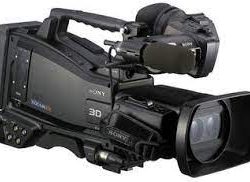
The Pros And Cons Of SLR Digital Cameras
Digital single-lens reflex cameras (DSLRs) are one of the most popular types of cameras on the market. They are loved by professional photographers and serious amateurs for their image quality, versatility, and control. But DSLRs are not the perfect cameras for everyone. Here are some of the pros and cons of DSLRs to help you decide if one is right for you.
Pros of DSLR Cameras
Image Quality: DSLRs produce some of the best images of any type of camera. This is because they have large image sensors that allow for more light and detail to be captured. DSLRs also have powerful image processors that produce high-quality images.
Versatility: DSLRs are versatile cameras that can be used for a variety of photography genres, including landscape, portrait, sports, and wildlife. They also have a wide range of lens options that allow you to further customize your photography.
Control: DSLRs give you a lot of control over your images. With manual controls, you can adjust the shutter speed, aperture, and ISO to get the perfect shot. You can also shoot in RAW format, which gives you even more control over your images in post-processing.
Cons of DSLR Cameras
Size and Weight: DSLRs are larger and heavier than other types of cameras, which can be a drawback if you want a compact camera that you can easily carry around with you.
Cost: DSLRs are more expensive than other types of cameras, which can be a barrier for some people.
Learning Curve: DSLRs can be complex cameras to use, and they require a bit of a learning curve to get the most out of them.
Now that you know some of the pros and cons of DSLR cameras, you can decide if one is right for you. If you need a high-quality camera with a lot of control and versatility, a DSLR may be the perfect choice. But if you want a smaller and less expensive camera, you may want to consider another type of camera.
Some feel that the large sensor and interchangeable lenses give them an edge over compact cameras, while others find the smaller size and cheaper price of the latter more appealing. So, which is better?
SLR cameras have a few advantages over their compact cousins. Firstly, their large sensors allow for better image quality, as they can capture more light and detail. Secondly, the interchangeable lenses give you much more flexibility in terms of the types of shots you can take. Finally, the SLR’s through-the-lens viewfinder gives you a more accurate representation of what your final image will look like.
On the downside, SLRs are generally more expensive than compacts, and their larger size can be a bit of a burden when you’re trying to take candid shots or be discreet. They also have a tendency to produce more blurred images, as the mirror inside the camera can cause the image to shake.
So, which is the better type of camera? It really depends on your needs and preferences. If you’re looking for the best possible image quality, then an SLR is the way to go. But if you’re worried about cost or portability, then a compact might be a better choice.

